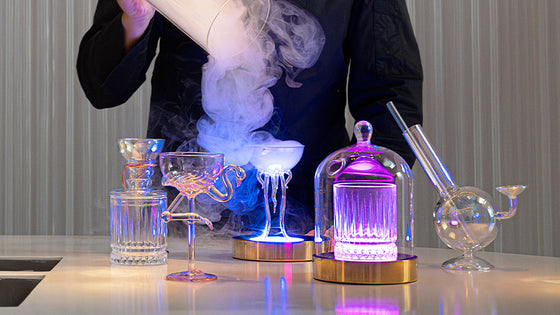The first American cocktail bar opened in the UK in 1893, serving ‘American style drinks’ in the Savoy Hotel. The decadent and stylish cocktails caught on in the UK, and cocktail hour was born. However, the drinkers were dandy men, and it wasn’t until the women’s movement kicked in that the girls got involved and boy, did they make it stylish.
Women’s Liberation
Despite women’s lib being run by primarily wealthy, middle or upper-class women, there wasn’t a snappy dresser insight. That was deliberate. The women involved in the movement conformed to traditional Edwardian dress codes to be taken seriously. The sartorial challenges in those days were the bohemians, who wore breeches and loose shirts with no corsets. Traditional women wore white, lacey tea dresses and wide-brimmed hats to shade their delicate skin from the sun. This was the era of the lawn picnic, after all. However, the suffragettes pushed for women being more visible and free in society, and they regularly met in the gilded Byzantine halls of the Criterion Restaurant on Piccadilly Circus. As a result, women were no longer afraid to go out and drink hard liquor with the men.

The Jazz Age
With Prohibition raging across the United States, a diaspora of out of work American bartenders fled across the pond and came to Europe to find employment. Bastions of cocktail culture began as a result: Harry’s Bar in Venice, Cafe Royal in London and Hotel de Crillon in Paris, for example. Add the influence of the jazz era on dancing and dress styles, and you have a perfect storm brewing. Women were suddenly sporting shorter hemlines in order to kick up a Charleston but drinking cocktails in fancy venues. The need for a formal but freeing dress became desirable, and the Flapper was born.
The Vogue Effect
The first mention of the term ‘cocktail dress’ was in Vogue, May 15th, 1927. It referred to a Patou designed dress in tweed. However, the moniker hadn’t stuck quite yet. The New York Times referred to the “late afternoon frock” to describe a dress explicitly designed to take women of leisure from afternoon tea to cocktail hour. In October 1931, Harper’s Bazaar talked about a new type of garment called the cocktail dress, calling it ‘avowedly modern.’ American women flooded Parisian fashion houses, requesting dresses or two-piece suits for ‘huere de l’aperitif.’
Hollywood had a significant impact on what women wore, with sirens like Greta Garbo and Mae West popularising sporty, casually cut dresses for high-drama high-style drinking situations. However, these dresses still felt frivolously out of reach for the average British woman.
Women’s Work
Despite the hardships that defined the early half of the 20th century — the first war, the Spanish flu, the depression and finally the second war — women made looking great a priority. Not only did the women of the United Kingdom step up in the home, making dresses from old parachute silk and the like, but they showed capability in traditionally male jobs. Women proved they made good engineers, farmers, spies and code breakers. Women got jobs, which meant they had their own money to spend, and a new market opened up as a result.
Christian Dior opened their first runway show with an inspired ‘New Look’ collection in 1947. He called one particular gown a ‘cocktail dress’, opening the door to advertisers, high-street copycats and rival designers to promote fashion with drink-specific terminology. By 1952, Dior had set up a boutique to sell high-end ready-to-wear versions of his designs to the British public.
Dressmakers appealed to thrifty sensibilities by advertising dresses with more than one use, including the day-to-evening wear previously only available to rich heiresses buying Parisian haute couture.

Kitchen Convenience
Women needed something professional to wear. During the 1950s, the synched waists, blowsy skirts, curved necklines and feminine tailoring of Dior’s New Look became normalised. Some cocktail clothing styles worked as business attire that seamlessly suited the office to after-work drinks.
Cocktails became as associated with home entertaining as with fancy hotel bars. Kitchen gadgets like freezers, refrigerators, juicers and blenders made fresh cocktails at home an everyday experience. Women in the UK put on cocktail dresses to host cocktail parties at home. As Evelyn Waugh’s brother Alec explained in an essay in Esquire Magazine, “There’s nothing to do on winter evenings between half-past five and half-past seven…What one needs is some kind of party that starts at half-past five and lasts ninety minutes, at which alcohol is served, but not much food.”
Now, we think of a cocktail dress as a semi-formal occasion dress, sometimes worn with accessories like boleros, gloves and hats. It’s a look we distinguish from an evening wear dress like a ball gown and a daywear dress like a tea dress suitable for important occasions like weddings, anniversary parties, graduations, christenings and social or business networking events.
A cocktail dress should be practically comfortable, outwardly attractive and cover-up enough skin for appropriate formality. If you’re travelling or at leisure, the formality opens up a little, and looser fits, lighter materials and more outré styles are suitable.
















